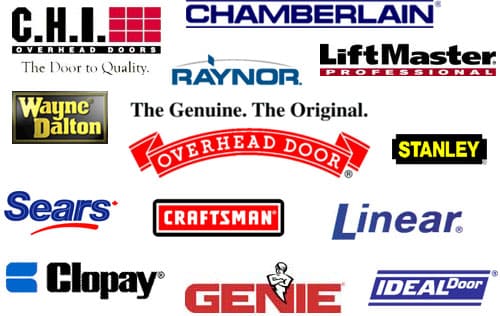Garage Door Opener Repair
Garage doors are an essential part of our homes, providing security and convenience. To ensure smooth operation, a reliable garage door opener is crucial. However, like any mechanical device, garage door openers may encounter problems over time. In this article, we will explore common issues with garage door openers and provide a step-by-step guide to repairing them. Whether you're facing a malfunctioning motor, a faulty remote control, or other problems, this article will help you troubleshoot and fix the issues.
What is a garage door opener?
A garage door opener is a motorized device that controls the opening and closing of a garage door. It consists of a motor, a drive system (belt or chain), limit switches, and a remote control. When you press the remote control button, the opener motor activates, pulling or pushing the garage door along its tracks, allowing you to enter or exit the garage effortlessly.

Common problems with garage door openers
Garage door openers can experience various issues that affect their functionality. Some common problems include:
- Garage door not opening or closing fully
- Unresponsive remote control
- Strange noises during operation
- Door reversing unexpectedly
- Motor running but door not moving
- Safety sensor malfunctions
Troubleshooting garage door opener issues
Before diving into repairs, it's essential to troubleshoot the problem accurately. Here are some troubleshooting steps to follow:
- Check power supply and batteries
- Inspect the safety sensors
- Ensure the door is not obstructed
- Examine the remote control
- Look for loose connections
Step-by-step guide to repairing a garage door opener
To repair a garage door opener, follow these steps:
Step 1: Tools and materials needed for the repair
Before starting the repair process, gather the necessary tools and materials. You may need:
- Screwdrivers (flathead and Phillips)
- Pliers
- Adjustable wrench
- Lubricant (silicone-based)
- Replacement parts (if required)
Step 2: Safety precautions
Ensure your safety by taking the following precautions:
- Disconnect the power to the opener.
- Secure the garage door in the open position.
- Wear safety goggles and gloves.
Step 3: Assessing the problem
Identify the specific issue with your garage door opener by conducting a thorough inspection. Look for signs of damage or malfunction, such as loose wires, worn-out gears, or misaligned sensors.
Step 4: Repairing the motor
If the motor is the problem, you may need to repair or replace it. Check for loose connections, damaged wiring, or worn-out motor components. Consult the manufacturer's manual for specific instructions on motor repairs or replacements.
Step 5: Fixing the remote control
If the remote control is unresponsive, try replacing the batteries first. If that doesn't work, inspect the remote for any visible damage or loose connections. Consider reprogramming the remote control to sync it with the opener.
Step 6: Adjusting the limit switches
Improperly adjusted limit switches can cause the
garage door opener to malfunction. To fix this, locate the limit switches on the opener unit. These switches determine how far the door opens or closes. Adjust them carefully according to the manufacturer's instructions to ensure the door opens and closes fully without any issues.
Step 7: Replacing the drive belt or chain
If you notice a loose or damaged drive belt or chain, it may be necessary to replace it. Disconnect the opener from the power source and remove the old belt or chain. Install the new one following the manufacturer's guidelines. Make sure it is properly tensioned for smooth operation.
Step 8: Lubricating the moving parts
Over time, the moving parts of a garage door opener can become dry and create friction. Apply a silicone-based lubricant to the tracks, rollers, hinges, and other moving components. This helps reduce wear and tear, prevents rust, and ensures smooth operation.
Step 9: Testing and fine-tuning
Once you have completed the necessary repairs, reconnect the power to the opener and test the door's functionality. Open and close it several times to check for any remaining issues. Make any necessary adjustments or fine-tuning to ensure optimal performance.
Preventive maintenance for garage door openers
To keep your garage door opener in excellent condition and prevent future problems, follow these maintenance tips:
- Regularly inspect the opener for signs of wear or damage.
- Clean the tracks and remove any debris or obstructions.
- Test the safety sensors periodically to ensure they are working correctly.
- Tighten any loose screws or bolts.
- Lubricate the moving parts every six months.
- Schedule professional maintenance at least once a year.
Conclusion
A malfunctioning garage door opener can be frustrating and inconvenient. By following the step-by-step guide in this article, you can troubleshoot and repair common issues with your garage door opener. Remember to prioritize safety, gather the necessary tools, and follow the manufacturer's instructions. With proper maintenance, your garage door opener will continue to operate smoothly and reliably.
FAQs - Garage Door Opener Repair
Q: How often should I lubricate the moving parts of my garage door opener?
A: It is recommended to lubricate the moving parts every six months to ensure smooth operation.
Q: Can I repair the garage door opener myself, or should I hire a professional?
A: Minor repairs can often be done by homeowners. However, if you're unsure or dealing with complex issues, it's best to consult a professional.
Q: Why is my garage door reversing when I try to close it?
A: This could be due to misaligned or dirty safety sensors. Clean the sensors and ensure they are properly aligned for the door to close smoothly.
Q: How long do garage door openers typically last?
A: With proper maintenance, garage door openers can last between 10 to 15 years.
Q: What should I do if my garage door opener is making unusual noises?
A: Noises can indicate various issues, such as worn-out parts or lack of lubrication. Inspect the opener and lubricate the moving parts. If the noise persists, consider consulting a professional.